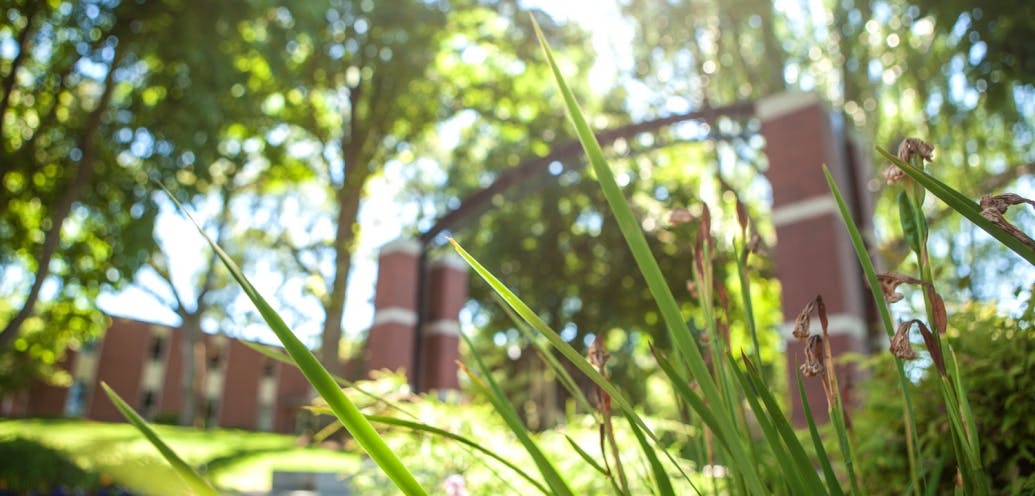In his final vision, Ezekiel writes of the future.
 Living in exile in Babylon, aware of the total destruction of Jerusalem and the temple, he nonetheless describes a new temple, a new river of healing, and a restored sea.
Living in exile in Babylon, aware of the total destruction of Jerusalem and the temple, he nonetheless describes a new temple, a new river of healing, and a restored sea.
He describes water flowing out from the temple, creating a deep river that nurtures strong fruit trees. The river eventually reaches the ocean, where it renews life. The image concludes with a promise: “Swarms of living creatures will live wherever the river flows” (47:9).
This vision primarily anticipates God’s work, but it also presents a helpful framework for discipleship. After all, one way of thinking about discipleship is to recognize that we don’t work alone for God. We enter into the work that God is doing for us and for our world.
Using this vision as metaphor, discipleship, like Ezekiel’s river, begins in the temple, the place of worship and devotion where God’s Shekinah glory is said to dwell.
From there, the river flows out, expanding to mighty proportions. It nourishes the trees on the banks and turns dead, unproductive stumps into trees that never wither and bear fruit year-round.
Finally, the river reaches the sea, where it replenishes a space of death and despair. Bracken water that kills is replaced, miraculously, with fresh water that nurtures an overwhelming abundance of life.
Temple, river, sea: The life of a disciple mirrors these elements.
As disciples we spend time in the temple. We draw close to God and receive his love in worship and devotion. It is here that we empty ourselves before God and are filled by God’s Spirit.
But we don’t stay in the temple. Authentic discipleship overflows into a river of mercy, justice, and love. It joins in the work of making the dead trees — trees of broken relationships, trees of lost identity, trees of injustice, trees of inequity — alive with fruit.
And the river is always drawn by the sea. For now, often, all we can see is a sea of death, a sea so salty that nothing can survive. But for God’s promise, our work along the way would come to nothing.
However, Ezekiel’s vision reminds us that death is not the last word. There will come a day when all will be made right, when the sea will be fresh. Death and mourning will be done away with. God’s people in all their diversity will gather from the ends of the earth. And the sea will overflow with abundant life.
One challenge for me — and for the SPU community as we seek a deeper understanding of Christian discipleship — is the need to hold these three elements together. A focus on one to the exclusion of the others can lead to a distorted life of faith. For example, it is good and right to focus on temple worship, prayer, and study. But if that is the end of our discipleship, we will end up as constipated Christians. We were made to enjoy God, but the love that God pours into us was made to overflow to a needy world.
If, however, we overemphasize the river to the exclusion of the temple, we will end up burnt out, caring for the poor and marginalized but lacking resilience to stay the course. St. Bernard de Clairvaux described this as the difference between a reservoir, filled up and spilling over, and a channel that releases all it has immediately. Works of service divorced from contemplation and devotion are exhausting.
Finally, without a deep conviction that, in the end, the sea will flourish with abundant life, our devotion and service can be thwarted. Without hope, we face two temptations. One is to quit, thinking the pervasive darkness will overcome our small efforts. Or we can feel compelled to go down fighting the good fight by ourselves, forgetting that God is responsible for the results.
Of course, all metaphors have shortcomings and the weakness of the temple-river-sea metaphor is its linearity. Water flows only one way, from source to sea. This could suggest that one encounters God’s presence in the temple and then leaves God behind to do good works. God is present and active in every phase of the vision. But we need all three elements together.
The discipleship we seek to foster at SPU must be marked by temple, river, and sea. It must unite worship and devotion with works of justice, mercy, and love, all motivated by a bedrock hope founded on the promises of God. May this be the character of our lives and the mark of our community.




